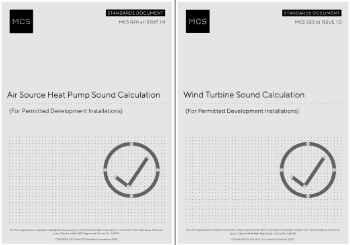Developed design
NB The 2020 edition of the RIBA Plan of Work has renamed this stage 'spatial coordination'.
The process of completing the design and construction of a building is often divided into notional 'stages'. This can be helpful in establishing milestones for the submission of progress reports, the preparation of information for approval, client gateways, and for making payments.
However, there is a great deal of ambiguity between the naming of stages and the definition of what individual stages include (for example, see Comparison of work stages), and so it is important that appointment documents make it clear what activities fall within which stage, and what level of detail is required.
'Developed design' was a phrase coined by the Royal Institute of British Architects (RIBA) for their 2013 Plan of Work. This plan comprised eight work stages, and its new terminology, stage referencing system and lack of detail generated some criticism.
- 0 - Strategic definition.
- 1 - Preparation and brief.
- 2 - Concept design.
- 3 - Developed design.
- 4 - Technical design.
- 5 - Construction.
- 6 - Handover and close out.
- 7 - In use.
The RIBA states that 'Developed Design maps broadly to the former Stage D – Design Development – and part of Stage E – Technical Design. The strategic difference is that in the RIBA Plan of Work 2013 the Developed Design will be coordinated and aligned with the Cost Information by the end of Stage 3. This may not increase the amount of design work required, but extra time will be needed to review information and implement any changes that arise from comments made before all the outputs are coordinated prior to the Information Exchange at the end of Stage 3.'
The RIBA described the activities carried out during the stage as preparing the 'developed design, including co-ordinated and updated proposals for structural design, building services systems, outline specifications, cost information and project strategies in accordance with the design programme.' Spatial coordination should be completed and change control procedures introduced, and typically landscape designs will be prepared and planning applications made. This stage may involve input from specialist sub-contractors and suppliers.
Historically, the tasks associated with 'developed design' would have been described as the 'detailed design' stage, which is perhaps a clearer and better understood description.
The 2020 edition of the RIBA Plan of Work has renamed this stage 'spatial coordination'.
Where building information modelling (BIM) is being used, during this stage, the project information model is developed based upon generic representations with approximate quantities, size, shape, location, tolerances, and so on. Specification properties and attributes are developed so that the selection of systems and products is possible.
Where the employer has already specified that certain building products should be used, or where there are key components that have already been selected, these may be incorporated into the model. Structural information and architectural information should develop in detail, and services design may include generic information about sizes, capacity and control systems. The model may allow early contractor engagement and an outline construction sequence may be developed. Plans, cross sections, elevations, and visualisations may be produced as well as schedules of facilities.
[edit] Related articles on Designing Buildings
Featured articles and news
Heat pump and wind turbine sound calculations for PDRs
MCS publish updated sound calculation standards for permitted development installations.
Homes England creates largest housing-led site in the North
Successful, 34 hectare land acquisition with the residential allocation now completed.
Scottish apprenticeship training proposals
General support although better accountability and transparency is sought.
The history of building regulations
A story of belated action in response to crisis.
Moisture, fire safety and emerging trends in living walls
How wet is your wall?
Current policy explained and newly published consultation by the UK and Welsh Governments.
British architecture 1919–39. Book review.
Conservation of listed prefabs in Moseley.
Energy industry calls for urgent reform.
Heritage staff wellbeing at work survey.
A five minute introduction.
50th Golden anniversary ECA Edmundson apprentice award
Showcasing the very best electrotechnical and engineering services for half a century.
Welsh government consults on HRBs and reg changes
Seeking feedback on a new regulatory regime and a broad range of issues.
CIOB Client Guide (2nd edition) March 2025
Free download covering statutory dutyholder roles under the Building Safety Act and much more.
Minister quizzed, as responsibility transfers to MHCLG and BSR publishes new building control guidance.
UK environmental regulations reform 2025
Amid wider new approaches to ensure regulators and regulation support growth.
BSRIA Statutory Compliance Inspection Checklist
BG80/2025 now significantly updated to include requirements related to important changes in legislation.
























